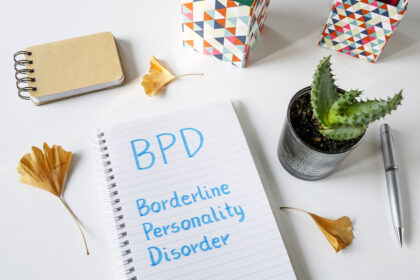How to Cope with BPD
Living life is hard enough without any mental illness or mentally inhibiting condition. Borderline Personality Disorder (BPD) remains one of the hardest conditions to treat in the mental health field (Biskin, 2015). This is often argued due to the plethora of symptoms which can counteract therapy and any sort of treatment plan. BPD patients are often considered resentful, manipulative, and extremely difficult to work with. This is why many therapists and mental health professionals will refuse to work with a BPD patient. Thus, learning to cope with BPD is increasingly difficult.
How Do You Live With BPD?
While there are many ways individuals with BPD learn to cope with their condition, there are most certainly some methods which work exceedingly better than others. This is a list of some of the most common practices in coping with BPD, many of which are taught throughout the Sensitive Stability program.
Build BPD Coping Skills
There are a variety of coping skills which allow a BPD person to adapt to past trauma and current events. It is possible to learn how to better treat others and how to treat yourself. The first step is accepting that coping skills are required to live a better life. The second step is finding a set of coping skills which work best for the individual. Every BPD case is different and deserves personal attention. Having a network of skills which can help divert an episode could be called imperative in terms of surviving with BPD and living a happy life.
Sensitive Stability has developed a BPD program that helps you build the skills necessary to cope and live with BPD. A lot of our students end up in a manageable state very quickly, and most will see recovery by the end of the program. Check out our course information to learn more!
Positive Life Attributes
A lot can be said about living life in positivity. There are plenty of activities which help occupy the BPD mind and develop favorable habits. For each individual this will be extremely different. For some individuals, sports are the way to a proper peace of mind, whether watching or participating. For others, exercise is an important facet to proper to achieving happiness. Some BPD people prosper when they listen to or make music. Truly, there is a plethora of hobbies which can create value in a BPD person’s life and oftentimes it is just a matter of discovering these values. Regardless, it seems that positive life attributes remains one of the most critical values in achieving happiness for any individual, especially if they suffer from Borderline Personality Disorder.
Lifestyle Changes and Choice of Friends
Lifestyle changes is a tougher development for many BPD individuals. This is mostly because the BPD individual is habit-forming and has created a life of pattern. For example, living clean can be a difficult feat for many individuals with BPD due to their perpetual alcohol and drug use. Additionally, many people surround themselves with individuals who share similar values (Lynch, 2016). Finding a new, more positive network of friends can be difficult, however, one of the most important parts of recovering from BPD is avoiding friends who could be considered poor influences. Committing to this lifestyle change, including things like eating better (Ambwani & Morey, 2015), is critical in maintaining a healthy mindset and in regulating BPD.
Avoid Substance Use
Substance Use Disorders (SUDs) are commonly found as comorbid conditions in BPD patients (Trull et al., 2000). This is probably because many BPD victims turn to substances in excess in an effort to numb their intense mood swings and combat their BPD symptoms. Unfortunately, excessive substance use almost never helps a BPD individual and almost always further inflames the condition. Whether it is alcohol, prescription drugs, or illicit substances, BPD patients are almost always susceptible to developing addictions which worsen their condition (2000). It is also true (as with all SUDs cases) that one drug often leads to other drug use (NIAAA, 2008). Avoiding substance use is never easy, especially if SUDs has already developed, however, it is important for a BPD person to understand how substance use affects their condition, and if possible, how to avoid it.
CBT or DBT Practices
It is possible to understand the process of emotional instability, what causes it, and how to divert from quickly advancing, unwanted emotions. Cognitive Behavioral Therapy (CBT) and Dialectical Behaviour Therapy (DBT) are two of the most common talking therapies which are associated with this practice. They are also two of the most successful practices for controlling and coping with BPD (May et al., 2016). In other words, they are most proven to work (2016). These psychotherapy skills are so successful in treating BPD because they allow the individual to catalog their thoughts, organize their responses, and ultimately better control their behavior.
At Sensitive Stability, we teach a lot of CBT and DBT-related skills in our BPD program.
Build a Support Network
Having a strong support network is almost imperative for BPD management and recovery. This support system can include a spouse, a parent, other family members, friends, therapists, mental health professionals, or peers who also struggle with BPD. Just like AA, there is comradery found in the proper support group and this support can go a long way. Without a support system, a BPD individual is forced to walk the dark roads prior to recovery alone. Not only is this no fun, but it also seems to take people a lot longer to recuperate and cope with BPD when they have no support system.
Enrolling in Sensitive Stability courses means also gaining access to a wide, understanding support network. You will get access to our Study Hall forum, which allows you to regularly interact with BPD participants just like you. We also open our classroom thirty minutes early so that you may discuss and chat with your classmates and the instructor.
Mindfulness and Meditation Practices
Mindfulness could be defined as a nonjudgmental observation of continual streams of internal and external stimuli as they are presented to the individual (Keng et al., 2011). It is the practice of better understanding the mind and how it interprets the environment around it. It is also the practice of better understanding one’s thoughts and how they relate to the environment. This type of practice goes hand-in-hand with CBT-related skills, in that the entire process involves rerouting the mind’s thoughts to produce more appropriate outcomes and behaviors. Meditation also comes to play, as it allows the brain to settle, giving the individual a prime opportunity to seek reasonable answers to their troubles. And since BPD involves a lot of irrational thinking, mindfulness and meditation are invaluable skills to secure.
Sensitive Stability teaches a lot of mindfulness and meditation-oriented skills which significantly improve the odds of remission and control when it comes to BPD symptoms.
Learn to Thwart the Triggers
Understanding episodes are developing issues is the first step in controlling the episode, or completely diverting from the episode altogether. Learning that there often triggers to a BPD episode can help suffering individuals get a bit ahead and often choose different behavior. Identifying these triggers and realizing that there are other ways of thinking, or other ways of analyzing the environment and internal thought process is critical in successfully managing and coping with BPD.
Helping Other People
There is something to be said about the value which comes from helping others. Helping other people builds a lot of dopamine and oxytocin in the system, two important neurotransmitters which are often sought out by individuals with BPD (Bandelow et al., 2010). BPD patients often seek out these neurotransmitters as a way to better balance their disruptive, erratic mood swings and behavior (2010). Simply offering help to other people is one of the easiest ways to obtain balance and feel good about oneself, and BPD patients which have a meaningful purpose which helps other people almost always seems to help.
Many of the students at Sensitive Stability will go on to become Senior Students and even Mentors, allowing them a new level of satisfaction in life, and the ability to pass on their well-learned skills to others.
Final Words on Coping with BPD
Ultimately, there are many ways to successfully live with BPD. There are ways to identify symptoms as they approach. There are ways to sidestep destructive episodes. There are even ways to lead a better, more fulfilling life that brings happiness into a BPD patient’s life. Finding the best working strategies for each individual is crucial in delivering skills which work. Since every individual and every BPD case is different, this often means a bit of trial and error, but any individual suffering from BPD will likely agree that it is worth the effort.
Important Disclaimer: If you or someone you know is having a medical emergency, experiencing a BPD episode and needs help, or exhibiting parasuicidal or suicidal behavior, please contact emergency services immediately. Additionally, there are many free suicide hotlines including the National Suicide Prevention Lifeline at 1-800-273-8255.
References
Ambwani, S., and Morey, L., (2015). Food Consumption as Affect Modulation in Borderline Personality, Journal of Personality Disorders, 29(2), 261-274. Retrieved from: https://scholar.dickinson.edu/cgi/viewcontent.cgi?article=1348&context=faculty_publications
Bandelow, B., Schmahl, C., Falkai, P., and Wedekind, D., (2010). BORDERLINE PERSONALITY DISORDER: A DYSREGULATION OF THE ENDOGENOUS OPIOID SYSTEM?, Psychological Review, 117(2), 623-636. DOI: 10.1037/a0018095
Biskin R., (2015). The Lifetime Course of Borderline Personality Disorder. Canadian journal of psychiatry, Revue canadienne de psychiatrie, 60(7), 303–308. DOI: https://doi.org/10.1177/070674371506000702
Keng, S., Smoski, M., and Robins, C., (2011). Effects of mindfulness on psychological health: a review of empirical studies, Clinical psychology review, 31(6), 1041–1056. DOI: https://doi.org/10.1016/j.cpr.2011.04.006
Lynch, B., (2016). Study Finds Our Desire for ‘Like-Minded Others’ is Hard-Wired, The University of Kansas, KU News Service. Retrieved from: https://news.ku.edu/2016/02/19/new-study-finds-our-desire-minded-others-hard-wired-controls-friend-and-partner
May, J., Richardi, T., and Barth, K., (2016). Dialectical behavior therapy as treatment for borderline personality disorder, The mental health clinician, 6(2), 62–67. DOI: https://doi.org/10.9740/mhc.2016.03.62
NIAAA, (2008). ALCOHOL AND OTHER DRUGS, Alcohol Alert, U.S. Department of Health & Human Sciences, 76. Retrieved from: https://pubs.niaaa.nih.gov/publications/aa76/aa76.htm Trull, T., Sher, K., Minks-Brown, C., Durbin, J., and Burr, R., (2000). Borderline Personality Disorder and Substance Use Disorders: A Review and Integration, Clinical Psychology Review, 20(2), 235-253. DOI: 0272-7358/00




